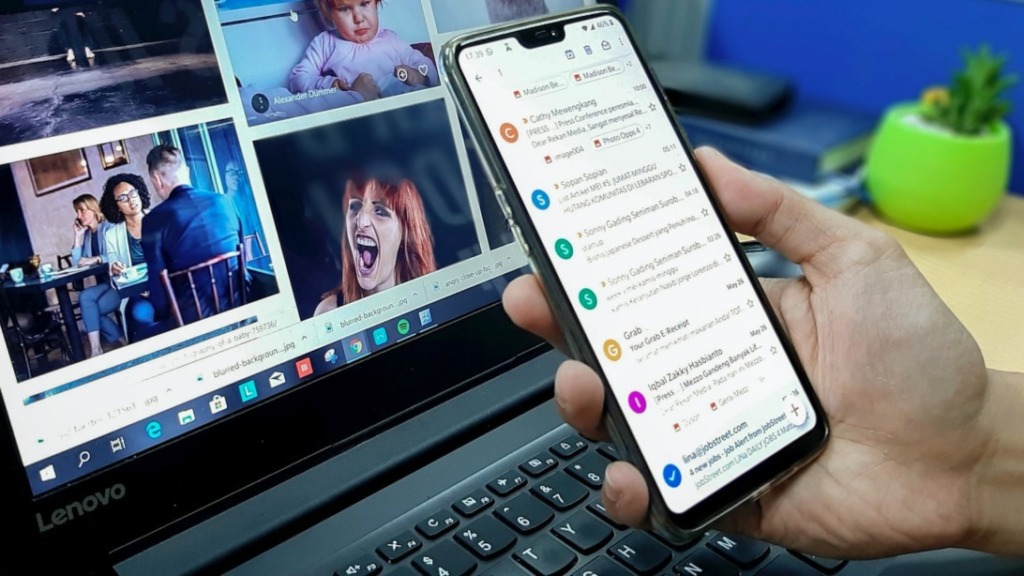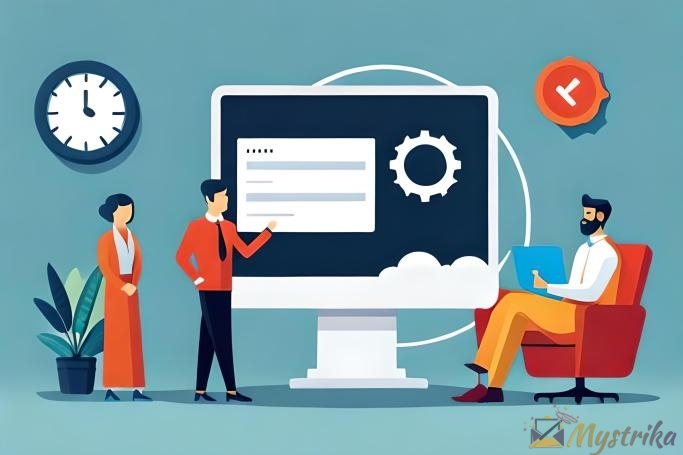Do you struggle with crafting effective cold emails that actually get responses? It can be a daunting task, but efficient cold emailing is essential for networking, job applications, and sales pitches. With the right templates and strategies in place, you can save time while still making a strong impact on your intended audience.
In this article, we’ll explore the importance of efficient cold emailing and how to define your target audience. You’ll learn how to craft a strong subject line that grabs attention, greet your recipient in a friendly yet professional manner, and introduce yourself and your purpose effectively. We’ll also provide templates for job applications, sales pitches, and networking opportunities to help guide you in the right direction. By following these tips and measuring your success along the way, you can adjust your strategy as needed for maximum results. So let’s dive in!
Key Takeaways
- Defining target audience and crafting a strong subject line are crucial for efficient cold emailing.
- Personalization and establishing credibility can greatly improve the effectiveness of cold emails.
- Highlighting benefits and value propositions in a cold email can increase the likelihood of a response.
- Measuring success and adjusting strategies, as well as building long-term relationships through effective networking emails, are essential for successful cold emailing.
Understanding the Importance of Efficient Cold Emailing
You need to understand the importance of efficient cold emailing if you want to save time and increase your chances of success. Streamlining outreach is crucial in today’s fast-paced business world where people receive countless emails daily. By crafting effective emails that get straight to the point, you can ensure that your recipients will not only read them but also respond promptly.
Optimizing responses is another reason why efficient cold emailing should be a top priority for any professional. By sending personalized and targeted emails, you can increase the likelihood of getting positive feedback from your contacts. Additionally, by using templates that have been proven to work effectively, you can save yourself a lot of time while still achieving great results.
To achieve efficient cold emailing, it’s essential to define your target audience first. This means knowing who you’re trying to reach out to and what their specific needs or pain points are. By doing so, you can tailor your messages accordingly and make sure that they’re relevant and valuable to your recipients. With this knowledge in hand, creating effective email templates becomes much easier as well.]

Defining Your Target Audience
Imagine throwing a dart blindfolded. You might hit the target, but it’s unlikely. The same goes for cold emailing without knowing your target audience – you may get lucky, but chances are you’ll miss the mark. Identifying pain points and researching demographics is crucial in determining who your audience is and what they need. Once you have this information, you can create buyer personas and segment your email list accordingly.
Identifying pain points means understanding the problems or challenges that your potential customers face. These can be anything from struggling to find time for certain tasks to feeling overwhelmed by too many options in a particular market. By addressing these pain points in your emails, you show your audience that you understand their needs and can offer solutions.
Researching demographics involves gathering data on factors such as age, gender, location, income level, and education level. This information helps you tailor your messaging to resonate with specific groups within your target audience. Creating buyer personas based on this data allows you to craft personalized messages that speak directly to each group’s unique interests and concerns. Segmenting lists ensures that each group receives content relevant to them.
Crafting a strong subject line is key to getting potential customers to open and engage with your emails – but it all starts with understanding who those customers are first!
Crafting a Strong Subject Line
Crafting attention grabbing subject lines is crucial for capturing the attention of potential customers and increasing email engagement. You have mere seconds to make an impression with your subject line, so it’s important to be creative and concise. Avoid using spammy words or phrases like “free” or “limited time offer,” as these are likely to trigger spam filters and send your email straight to the junk folder.
Instead, focus on creating a sense of urgency or curiosity in your subject line. Use action-oriented verbs that encourage the recipient to take immediate action, such as “Don’t Miss Out!” or “Limited Spaces Available.” Personalization is also key; try including the recipient’s name or referencing something specific about their business in the subject line.
Remember, your subject line is often the first (and sometimes only) chance you have to capture your recipient’s attention. Take the time to craft a strong and engaging one that will entice them to open your email and read on.
As you move on from crafting your attention grabbing subject line, it’s important to think about how you’ll greet your recipient. The opening sentence of your email should build upon the momentum created by your powerful subject line. Consider addressing them by name and acknowledging any relevant information you gathered during research into their business or industry. By showing that you’ve put thought into personalizing both the subject line and greeting, you’ll increase your chances of building a meaningful connection with potential customers.
Greeting Your Recipient
When greeting your recipient, make sure to show that you’ve done your research and acknowledge any relevant information about their business or industry. Personalization techniques can greatly improve the effectiveness of your cold email. Avoid using generic greetings like “Dear Sir/Madam” or “To whom it may concern.” Instead, address the recipient by name and reference something specific about their company or industry.
Cultural considerations are also important when greeting your recipient. Different cultures have different customs and norms regarding formalities in communication. For example, some cultures might prefer a more formal approach with titles and last names while others may prefer a more casual tone. Do some research on the culture of your recipient’s country before crafting your email.
Remember that the way you greet someone sets the tone for the rest of the email. A personalized and culturally appropriate greeting can help establish rapport with your recipient and increase their interest in reading further. In the next section, we’ll discuss how to introduce yourself and state your purpose in a clear and concise manner without sounding pushy or salesy.
Introducing Yourself and Your Purpose
Introducing yourself and stating your purpose in a clear and personalized manner is crucial to making a positive first impression on your recipient, helping you build trust and credibility right from the start. Here are four tips for crafting an effective introduction:
- Be concise: Keep your introduction brief, focusing on only the most important information about yourself and your purpose.
- Use n elevator pitch: Craft a short elevator pitch that succinctly describes who you are, what you do, and why you are emailing your recipient.
- Personalize: Take the time to research your recipient’s background or interests so that you can tailor your introduction to their specific needs or preferences.
- Be confident: Your tone should convey confidence and professionalism, while also being friendly and approachable.
By following these tips for introducing yourself effectively, you can set the tone for a productive relationship with your recipient right from the outset. As you move into establishing credibility with them in subsequent sections of your email, keep this strong foundation in mind as it will help reinforce their trust in both you as an individual and whatever product or service you are promoting.
Establishing Credibility
Establishing credibility is like building a foundation for a house – it takes time and effort, but once it’s solid, everything else will fall into place. When cold emailing, your first priority should be to build trust with the recipient. To do this effectively, you need to establish authority in your field. This can be achieved through highlighting relevant experience, qualifications or any notable achievements.
One way to establish credibility is by mentioning any accolades or awards that you have received. This shows that you are knowledgeable and respected within your industry. Additionally, providing links to published articles or speaking engagements can further showcase your expertise in the field. By demonstrating that you have valuable insight and knowledge on a particular subject matter, the recipient will be more likely to take interest in what you have to say.
Overall, establishing credibility is crucial for successful cold emailing as it lays the foundation for building a positive relationship with the recipient. By building trust through showcasing relevant experience and achievements, you can position yourself as an expert in your field and increase the likelihood of receiving a response from the recipient. In the next section about offering benefits and value propositions, we’ll delve deeper into how this approach can benefit both parties involved in a cold email exchange.
Offering Benefits and Value Propositions
Highlighting the benefits and value propositions in your cold email is like presenting a gift that the recipient can’t resist opening. In order to make an impact, you need to craft a compelling message that resonates with the reader. Start by identifying key benefits that will appeal to their interests and needs. This could be anything from saving them time or money, improving their productivity, or providing them with valuable information.
Once you have identified key benefits, it’s important to communicate them effectively using persuasive language. Remember, your goal is to convince the recipient that they should take action based on what you are offering. Use strong verbs and vivid adjectives to create a sense of urgency and excitement around your product or service. Make sure your value proposition stands out from the competition by highlighting unique features that set you apart.
Incorporating these key benefits and value propositions into your cold email will increase the likelihood of a response from the recipient. Effective communication is critical when reaching out to potential customers, so take the time to carefully consider how you present yourself and your business in this initial contact. In the next section, we’ll explore how to make a clear call-to-action that encourages recipients to take action without being pushy or aggressive.

Making a Clear Call to Action
Getting the recipient to take action is crucial, so it’s important to craft a clear and persuasive call-to-action in your cold email. Effective CTA strategies are essential for increasing response rates. Here are some tips:
- Make it easy: Your call-to-action should be simple and straightforward. Use a clear command verb and tell the recipient exactly what you want them to do.
- Example: “Click here to schedule a meeting” or “Reply with your availability for next week”.
- Create urgency: Adding a sense of urgency can motivate the recipient to act quickly. Consider using time-limited offers or mentioning upcoming deadlines.
- Example: “Limited spots available – sign up now!” or “Registration closes in 24 hours”.
Remember, your call-to-action is the most important part of your email. It’s what drives the recipient to take action, whether that’s scheduling a meeting, signing up for a trial, or making a purchase. By following these effective CTA strategies, you can increase your response rates and get better results from your cold emails.
Now that you’ve crafted an effective call-to-action, it’s time to add a personal touch to your cold email. This will help establish rapport with the recipient and make them more likely to respond positively.
Adding a Personal Touch
Now that you have learned the importance of making a clear call to action in your cold emails, it’s time to take it up a notch by adding personalization. This means tailoring your message to fit the recipient’s specific needs and interests. Why is this important? People are more likely to respond positively when they feel like you took the time to get to know them and their business.
Adding personalization doesn’t mean just using the recipient’s name or mentioning their company. It means doing some research beforehand, such as looking at their website or social media profiles, and finding out what they care about or what challenges they may be facing. Then, use that information to craft a message that speaks directly to them. This can be as simple as addressing a pain point they may have mentioned on their website or congratulating them on recent accomplishments.
By adding personalization, you also show that you’re not just sending out generic emails en masse but taking the time to connect with each individual recipient. This can go a long way in building rapport and establishing trust with potential clients or partners. So, do your research and tailor your message accordingly – it could make all the difference in whether your email gets noticed and responded to.
As you move forward with crafting your cold emails, remember that personalization is key. Take the extra time upfront to research each recipient before sending out an email tailored specifically for them. By doing so, you’ll increase the chances of getting a response and potentially securing new business partnerships. But don’t stop there – even after sending out personalized emails, following up is crucial in ensuring success.

Following Up on Your Email
While waiting for a response to your personalized cold email, the silence may feel like a deafening abyss. Don’t let this discourage you from following up with the recipient. Effective follow-up is key to getting a response and potentially closing a deal. However, timing strategies are crucial in ensuring that your follow-up doesn’t come across as spammy or annoying.
One effective timing strategy is sending a follow-up email after two or three days of no response. This shows that you are serious about your outreach but not too pushy. Another option is to wait a week before sending another email, giving the recipient more time to respond while also keeping your message at the top of their inbox. However, it’s important to note that every situation is different and requires its own unique approach.
Incorporating effective follow-up techniques into your cold emailing strategy can increase your chances of success. But don’t forget to modify templates to fit different industries and target audiences for even greater results.
Modifying Templates to Fit Different Industries
Adapting templates to suit various industries is crucial for a successful email outreach, so it’s important to understand the nuances and preferences of your target audience. Customizing language and tailoring content can make all the difference in how your message is received. Here are a few tips to help you modify your templates for different industries:
- Research industry-specific jargon and terminology to use in your email.
- Incorporate any recent news or trends relevant to the industry into your message.
- Address specific pain points that are unique to that industry and offer solutions.
- Personalize the email by mentioning any mutual connections or experiences related to that industry.
By taking these steps, you can tailor your templates specifically for each industry you’re targeting, which will increase the chances of getting a response from potential clients or partners.
Using templates for job applications also requires some customization. While certain elements like introducing yourself, highlighting relevant skills, and expressing enthusiasm remain constant across industries, there are ways to personalize the template even further. Keep reading to learn more about using templates effectively when applying for jobs.
Using Templates for Job Applications
Improve your chances of getting hired by personalizing your job application templates to stand out from the competition. While using templates can save time, it’s important to customize them according to the role you’re applying for, and the industry you’re in. This helps demonstrate that you’ve put in effort and research into tailoring your application specifically for that job.
When customizing templates, be sure to keep it concise. Recruiters don’t have much time to go through lengthy applications, so make sure every word counts. Use bullet points or short paragraphs to highlight your skills and experience that match the requirements specified in the job description.
Using templates for job applications is just one way you can streamline your search for a new role. But it’s not just limited to this – templates can also be used effectively when crafting sales pitches or cold emails. Keep reading for some tips on how to use these same principles when reaching out to potential clients or customers.
Using Templates for Sales Pitches
Utilizing pre-designed templates can be a game-changer for your sales pitches. These templates provide structure and ensure consistency in messaging, which is crucial when trying to make a sale. However, it’s essential to remember that simply using a template won’t guarantee success – customization is key.
Customizing templates allows you to tailor your message to the specific client or prospect you’re targeting. This personalization shows that you’ve done your research and are invested in their needs, which increases the likelihood of closing a deal. Additionally, A/B testing different variations of your template can help determine what resonates most with your audience.
Incorporating these techniques into your cold emailing strategy will save you time while increasing efficiency and effectiveness. The next section will dive into how utilizing templates can also enhance networking opportunities without coming across as spammy or impersonal.
Using Templates for Networking Opportunities
If you’ve been using templates for your sales pitches, you’re already one step ahead in the game of efficient cold emailing. But did you know that templates can also be used for networking opportunities? Whether you want to reach out to a potential mentor or connect with someone in your industry, customized email templates can save you time and energy while still making a meaningful impact.
Customizing templates is key when it comes to networking. You don’t want to send a generic message that could easily be mistaken for spam. Take the time to research the person and their company, and use that information to tailor your email. Personalization is important for building relationships, so make sure your message includes specifics about why you are reaching out and what value you can offer.
A/B testing templates is another strategy for optimizing your networking emails. Try sending different versions of your template with slight variations in language or formatting, and see which performs better. This can help you identify what resonates with your audience and make adjustments accordingly. With these tips in mind, crafting effective networking emails will become second nature – allowing you more time to focus on building meaningful connections.
As important as it is to craft compelling messages, it’s equally crucial to measure the success of your outreach efforts over time. In the next section, we’ll explore ways to track response rates and analyze data so that you can adjust your strategy as needed – ensuring continued growth and success in all aspects of cold emailing.
Measuring Your Success and Adjusting Your Strategy
When it comes to measuring your success and adjusting your strategy for networking emails, you’ll be able to see what’s working and what’s not by tracking response rates and analyzing data. This means that you can use A/B testing to experiment with different email formats, subject lines, or calls-to-action. By measuring the open rates, click-through rates, or even reply rates of each version of the email, you can identify which approach is most effective in engaging your recipients.
Tracking metrics is also essential when it comes to understanding the behavior of your recipients. For example, if you find that many people are opening but not replying to your emails, it could indicate that they are interested but don’t have enough time or motivation to respond. In this case, you may want to adjust your follow-up strategy by sending a reminder email after a few days or offering more specific questions or suggestions in your initial message.
Finally, analyzing data helps you make informed decisions about how to improve your networking emails over time. By keeping track of key performance indicators such as conversion rate (i.e., how many recipients become actual contacts), retention rate (how long they stay engaged with you), or referral rate (how many people they introduce you to), you can measure the impact of your efforts and optimize them accordingly. Remember: successful cold emailing isn’t just about getting one-time responses – it’s about building relationships that benefit both parties in the long run.
Conclusion
Congratulations! You now have the tools to efficiently cold email and get results. Remember, the key is to define your target audience, craft a strong subject line, greet your recipient, introduce yourself and your purpose, use templates for job applications, sales pitches, and networking opportunities.
But how do you measure success? One interesting statistic is that according to HubSpot’s study in 2020, personalized emails improve click-through rates by an average of 14% and conversion rates by 10%. So don’t be afraid to customize your templates based on the recipient’s interests or needs. And if you’re not seeing the results you want, adjust your strategy and keep testing until you find what works best for you.
In conclusion, efficient cold emailing can save you time while still achieving effective communication with potential clients or employers. By following these steps and using templates tailored for different situations, you’ll be on your way to successful cold emailing in no time!

